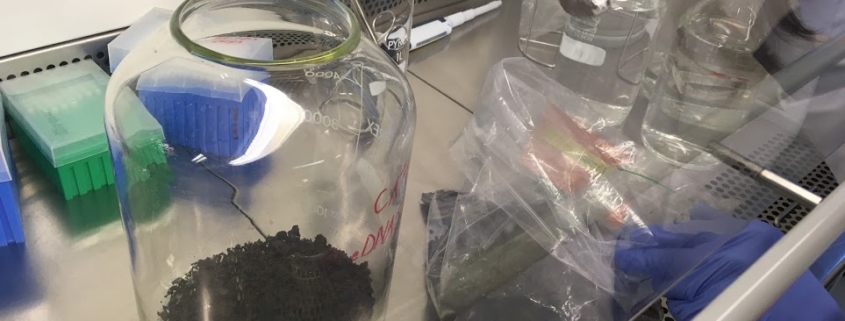Evaluation of biodiversity via DNA-extraction from soil and organism samples taken at permanent soil monitoring sites (MetaSOL)
Germany lacks a nationwide and standardised survey of soil organisms, although a comprehensive infrastructure for such a survey is available with approx. 800 permanent soil monitoring sites (Bodendauerbeobachtungsflächen, BDF). Not all federal states conduct their own soil biology surveys on their permanent soil monitoring sites. The most important reason for this is probably the time-consuming and expensive identification of soil invertebrates. The present project contributed to solving this problem. Earthworms, enchytraeids and collembolans were sampled at 25 sites and determined morphologically and by DNA metabarcoding, and the results were compared. The aim was to develop recommendations for an efficient and routinely implementable monitoring of soil fauna within the German BDF programme. The results showed that genetic identification methods are basically suitable for this purpose. However, before they can be introduced into official practice, several preconditions must be met. DNA reference databases must be comprehensive, well curated and quality controlled. DNA-based methods need to be standardised. Robust indices of soil health based on soil organism data need to be developed. It is recommended that soil fauna surveys should be carried out to the same extent and using the same methods in all federal states. Soil organisms (at least earthworms, enchytraeids and collembolans, possibly further groups) should also be regularly recorded using classical morphological methods. Genetic methods should be introduced gradually, starting with earthworms. The data collected should be compiled centrally and made available to the public. In the long term, environmental DNA metabarcoding should be used as standard for investigating and assessing soil biodiversity.
The final report of the project can be downloaded here.
For further information, see the open access publication in Ecology and Evolution:
Jänsch, S., Alves, D., Cunha, L., Krogh, P.H., Natal-da-Luz, T., Rojo, V., Römbke, J., Sapkota, R., Scheffczyk, A., Schmelz, R.M., Scopel, L., Sousa, J.P., Vierna, J., Vizcaíno, A. (2025). Comparison of morphological and DNA-based identification methods to assess earthworm (Clitellata: Lumbricidae) diversity at 25 permanent soil monitoring sites in Germany. Ecology and Evolution 15:e71155.
Last update: April 2025

 University of Aarhus
University of Aarhus SETAC
SETAC